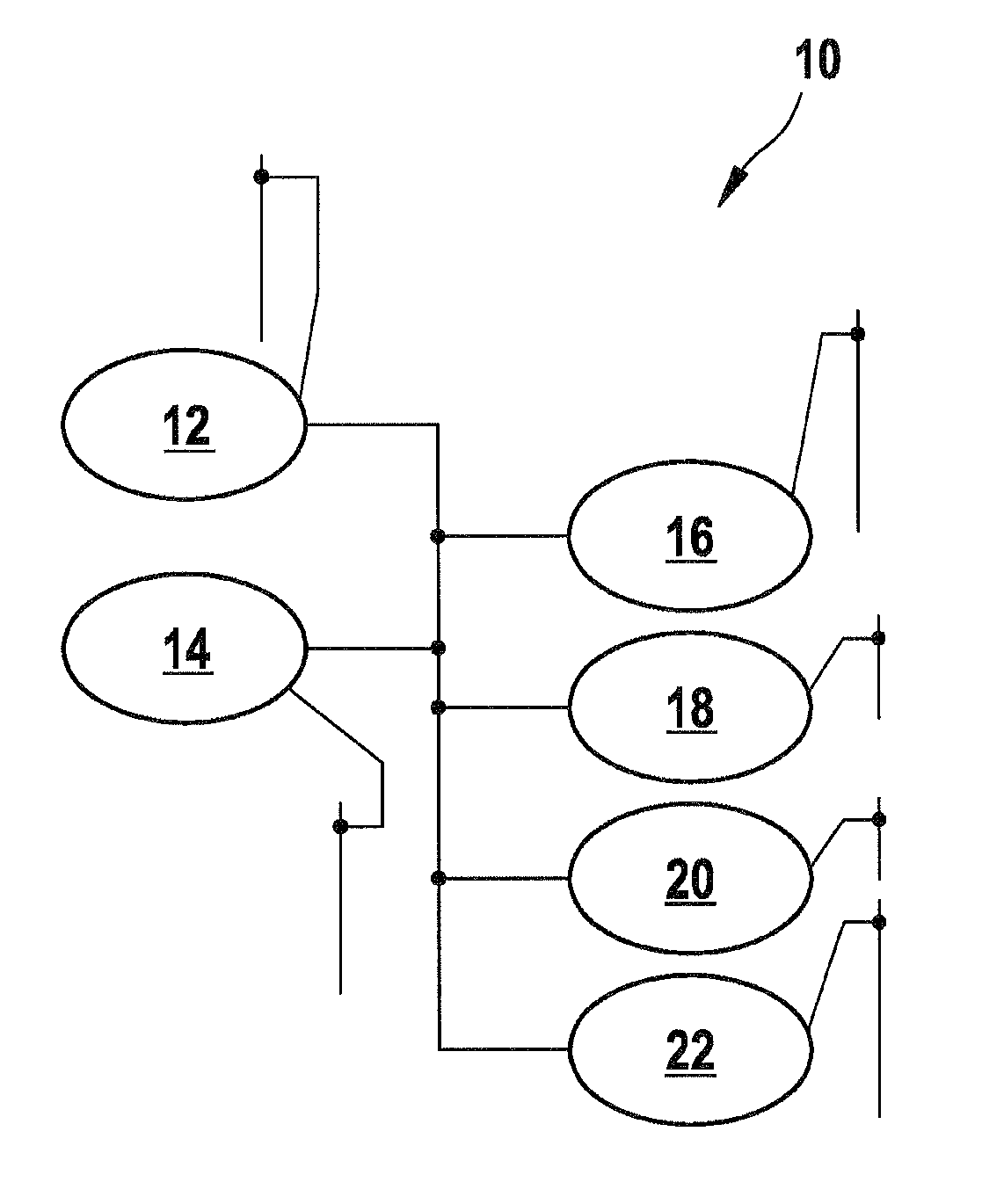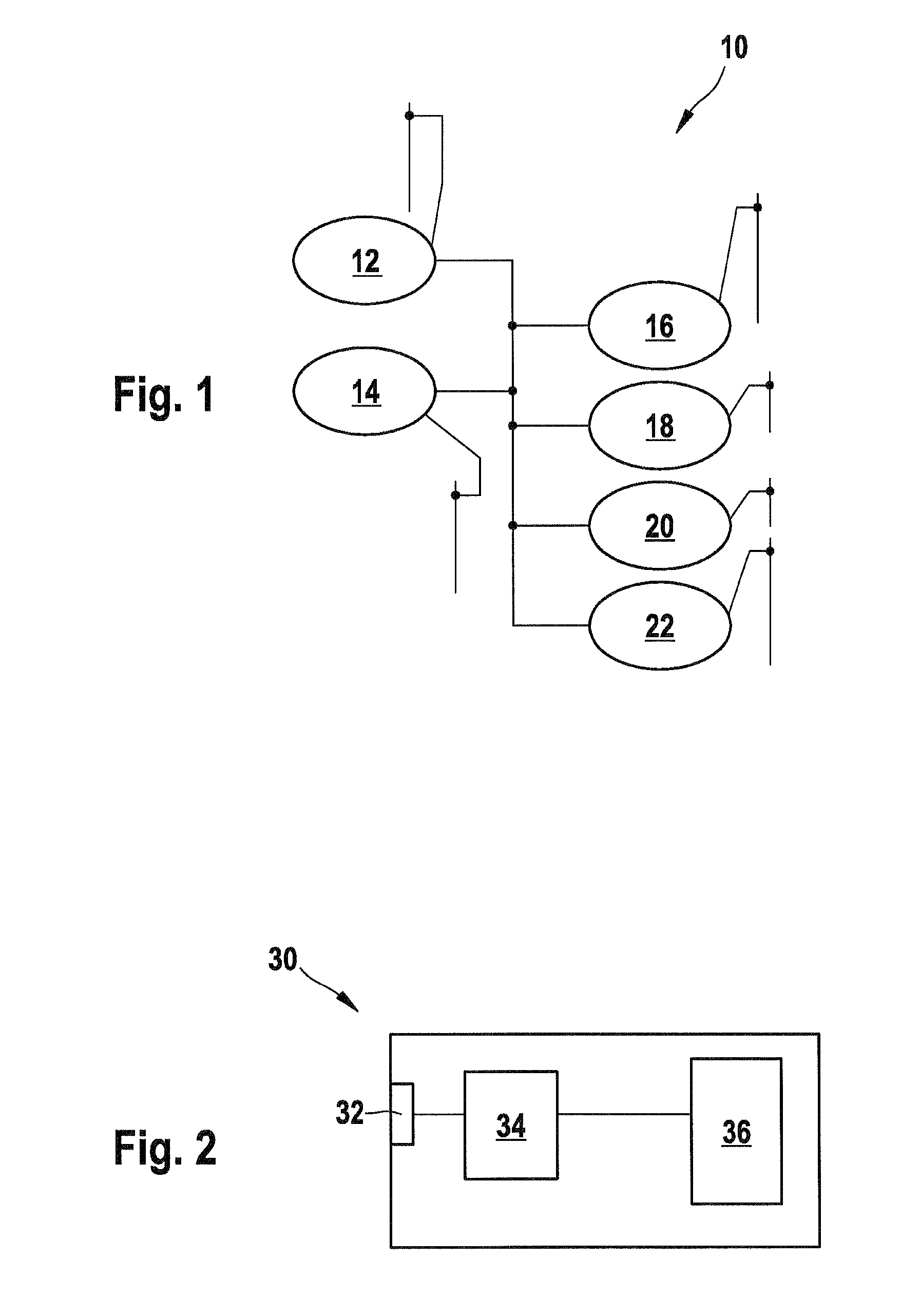Method for managing encryption keys in a communication network
- Summary
- Abstract
- Description
- Claims
- Application Information
AI Technical Summary
Benefits of technology
Problems solved by technology
Method used
Image
Examples
Embodiment Construction
[0035]According to FIG. 1 a communication network generally designated with reference number 10 comprises a timing master 12, a multicast transmitter 14, a first multicast receiver 16, a second multicast receiver 18, a third multicast receiver 20, and a third multicast receiver 22. The transmitter 12 distributes a first and a second key to all receivers 16, 18, 20, and 22.
[0036]The transmitter 12 sends encrypted data using a first key to all the receivers 16, 18, 20, and 22 which use a corresponding first key for decryption. At a certain point of time the transmitter 12 starts sending data encrypted by a second encryption key. The receivers 16, 18, 20, and 22 trying to decrypt the data with the first key notice that the decryption was not successful and start to use a second decryption key appropriate to decrypt the data.
[0037]Alternatively, the receivers decrypt in parallel with an old and a new key. Therefore, it is possible to detect at the receiving side that the decryption of a...
PUM
 Login to View More
Login to View More Abstract
Description
Claims
Application Information
 Login to View More
Login to View More - R&D
- Intellectual Property
- Life Sciences
- Materials
- Tech Scout
- Unparalleled Data Quality
- Higher Quality Content
- 60% Fewer Hallucinations
Browse by: Latest US Patents, China's latest patents, Technical Efficacy Thesaurus, Application Domain, Technology Topic, Popular Technical Reports.
© 2025 PatSnap. All rights reserved.Legal|Privacy policy|Modern Slavery Act Transparency Statement|Sitemap|About US| Contact US: help@patsnap.com


